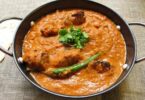Red meat
Seafood
Poultry
Eggs
Coconut
Olives
Nuts
Seeds
Avocado
Butter
When I say eat foods with fat, I do not mean eating only fish or olive oil. Saturated fats need to be part of the balance. Why?
A healthy omega 6 to omega 3 balance should be in a 1:1 ratio but no more than 6:1. Twenty to one is what most people eat today. How?
1. Omega 6 foods are cheap (soy, corn, vegetable oil) and are used in many commercially prepared foods.
2. Consumers have bought into the idea that unsaturated fats are healthy.
3. As consumers buy into conventional dogma and avoid meat/ saturated fat they eat more unsaturated fat.
So I’m here to open your mind to adding saturated fat as part of a variety of foods that should be added to your shopping list. The omega 6/omega 3 ratio is too high. Eating less omega 6 foods and adding back saturated fats can help improve this ratio and keep you healthy.
Here’s why, here’s how:
- Excess Omega 6 is linked to inflammation on the cellular level that can lead to many health issues (heart disease, arthritis, obesity and diabetes, metabolic syndrome, stomach issues, cancer, asthma, mental health issues).
- When you use vegetable oils at high heat to microwave, bake, sauté or fry, the high temperature oxidizes the oil and unsaturated “good” fat changes to bad cholesterol leading to heart disease,
- Omega 6 also can compete with Omega 3 and reduce the body’s ability to use Omega 3.
Saturated fat is more stable at high heat cooking temperatures. Use olive oil as a salad dressing but cook with natural sources of saturated fats that are not hydrogenated to avoid oxidation, http://articles.mercola.com/sites/articles/archive/2003/10/15/cooking-oil.aspx.
Fats can oxidize over time and saturated fats are more shelf stable than unsaturated fats, http://www.fromnaturewithlove.com/library/storagevegetableoils.asp.
Plant sources of Omega 3 ,like flax and chia seed, cannot be converted to the essential type of Omega 3 we need to utilize unless saturated fat is present.
Research supports saturated fats:
help prevent essential fats and skin cells from oxidation;
promote utilization of essential fats;
help balance the good bacteria in the gut and boost the immune system;
help in the process of calcium absorption and bone development;
lower lipoprotein(a) , a risk factor for heart disease;
protect the liver from alcohol and other toxins created by medication metabolism.
There are a few simple ways to balance the foods you eat with fat.
Will let you know…next blog 🙂
But maybe you have some of your own ideas. I’d love to hear one or some?
Related articles
- Saturation be damned (primalmeded.com)
- Fat ‘truth’ under fire (theage.com.au)








I was working with Dr. Atkins :). Thank you. I’m sorry to hear about your cardiac event but glad you are ok now. I’m glad you found me too. Use the information to help others avoid what happened to you. If you have any questions or topics of interest, let me know.
Wow, an intelligent dietitian!
Where were you back when I was consuming all those dreadful, low calorie, microwaveable Lean Cuisine meals, using margarine and drinking skim milk?
Had a cardiac event last fall, even though I’ve been on a LCHF regimen since 2008. I am sure it was due to all those years of eating garbage and totally bad advice from the government.
So glad I found you.